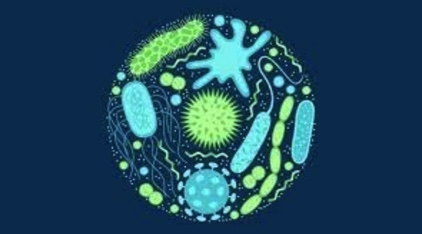The Battle Against Biology

JARED SOLOVEI – Mankind’s unrivaled ability to make tools as well as his inventive spirit are truly some of the greatest traits to evolve in biological systems on Earth. All it takes is a momentary spark of genius to change the world forever, and over the years these creative combustions have been countless. From the first stone tools fashioned over two and a half million years ago to technological marvels like the screen currently in front of you, our species has long used tools and inventions to solve problems and make life easier. But what happens when the problem you solved is changing, evolving even? Well that is where you, and all of mankind, might run into trouble.
Antimicrobial resistance has been described as “one of the greatest health challenges of our time” by the World Health Organization’s (WHO) director-general and is listed as one of the top 10 global public health threats. In the most simple terms, antimicrobial resistance occurs when germs learn how to circumvent the tools we use to treat them. But how can a bacteria, or something even more simple, like a virus, possibly learn anything, let alone a way to get around our sophisticated modern medicine? The answer lies in simple Darwinian natural selection.
Take the flu virus, for example. The influenza virus replicates at an extremely fast rate. And on average, every time it replicates, an error (referred to as a mutation) occurs in the new virus’s genetic material. This error is completely random and in the vast majority of cases will either do nothing or negatively impact the virus’s ability to replicate itself. However, when two special criteria are met at the time this mutation occurs, something rather alarming takes place. If a random mutation happens to affect the virus in a way that gives it immunity to an antiviral treatment while that same treatment is being administered to its host, natural selection takes hold. The selective pressure of the antiviral treatments gives the mutated virus a massive reproductive advantage and what started as a fluke mutation in an individual has suddenly turned into an entire population of treatment resistant viruses.
This phenomenon is not limited to viruses. Antimicrobial resistance threatens our ability to treat a wide range of diseases caused by bacteria, parasites, and fungi. As resistance spreads, doctors will lose the ability to treat even the most common illnesses. If changes are not implemented, humanity could be left with a world where diseases now regarded as benign once again become deadly.
Antimicrobial resistance is a natural consequence of modern medicine. The ability to adapt to changing and even hostile environments is an inherent feature of life. Thankfully, there are things that can be done to slow this process. Responsible use of medication is the one of the best ways to combat this growing problem. Antibiotics should never be used unless absolutely necessary, especially without a physician’s approval.
Even after we use these medications, we must pay attention to where they end up. When a person takes antibiotic or antiviral medication, both the drug and its metabolites are present in the individual’s urine. This creates the potential for the drug to make its way into the environment where it can accumulate in wild animals. These animal hosts can then act as natural reservoirs where treatment resistant pathogens develop. This problem is especially prevalent in underdeveloped countries without adequate sanitation.
Antimicrobial resistance is a special kind of problem. The same biological principles that molded our species into the tool making problem solvers that we are today now threatens to rob us of one of our crowning achievements: modern medicine. And while coordinated action is underway on a global level, it is up to the individual to govern their conduct. We must all take action today if we wish to prevent an antimicrobial-free tomorrow.
Copy Editor: Aditi Madhusudan
Photography Source:
